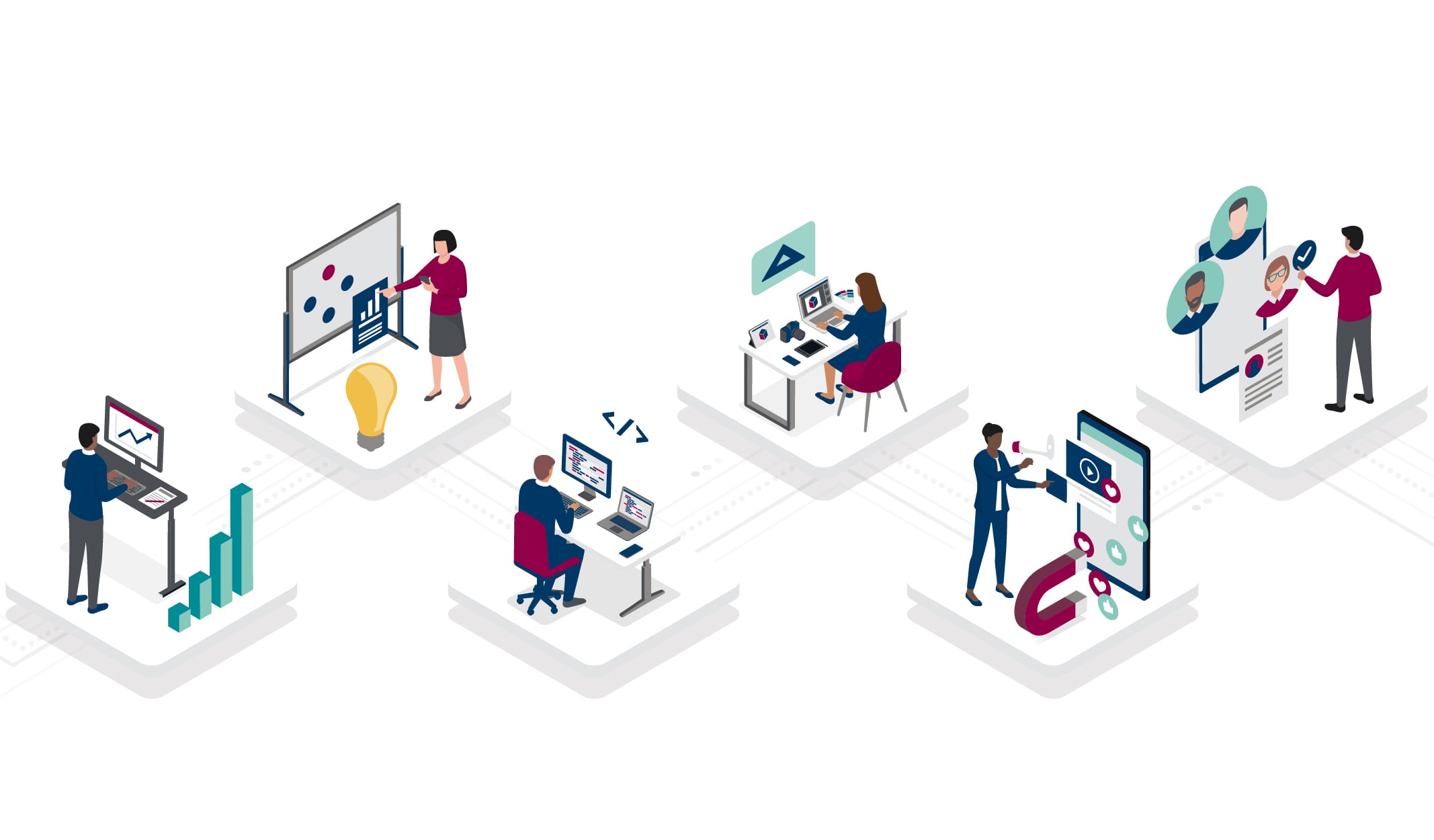Why Top Priorities for IT Should Include Automating Finance
Blog post
Share
For the Office of the CIO, enabling a symbiotic relationship between people, process and technology isn’t new. In fact, when IT teams were forced to quickly enable their organizations’ employees to work remotely due to the pandemic, the resilience and innovation of IT personnel everywhere was significantly tested.
As a result, the role of IT in the organization has leveled up; top priorities for IT now include facilitating new projects to contribute to enterprise business agility and strengthen the organization as a whole.

Automating finance and accounting functions should be a top IT priority in service of this goal. Automation in the Office of Finance not only delivers benefits like real-time financial insight, as well as the creation of an innovation culture while focusing on risk mitigation — but successful finance transformation supported by IT teams will also increase trust from business leaders. With this trust and proven credibility, IT teams can more easily establish a business case to work on other innovative, value-enhancing projects for the organization.
3 Top IT Priorities That “Move the Needle” for the Business
When it comes to budget allocation for IT priorities, 67% of CFOs refuse to fund IT investments they feel don’t “move the needle” for the business.
So what will move the needle for CFOs?
#1: Enabling Enterprise Business Agility With Real-Time Financial Insight
CEOs now expect the Offices of the CIO and CFO to enable enterprise business agility so the organization can make quick but accurate data-driven decisions to gain competitiveness in the market. One way that IT teams can accomplish this goal is by automating finance processes to ensure accurate, real-time financial insight are available that can be distributed across the organization.
Accurate data from the Office of Finance can be used by every business department in the organization. However, departments that need this information (like IT, FP&A, procurement) are typically barred from obtaining it because of the outdated manual processes that many finance and accounting teams currently use that leaves valuable data siloed across the organization.
“Data must be treated as a living, breathing asset. It should give insights, interpretations and recommendations to help individuals take action. This is the new world of modern business intelligence. Users shouldn’t have to be the analysts or spreadsheet masters to understand what’s happening in their business and act on those insights. Data agility enables the business to move faster and achieve its goals.” – State of the CIO, Spring 2021

If IT can make financial data not only more accessible, as well as more accurate and audit-ready (as the accuracy of data from manual financial close processes is questionable and lacks proper supporting documentation), the organization will achieve a level of efficiency and effectiveness that will make them a formidable market opponent.
#2: Creating An Innovation Culture in Finance Through Automation
69% of CIOs state that creating teams focused on innovation has become a top priority in the recent State of the CIO survey. But creating a culture of innovation within the Office of Finance is difficult with their current priorities largely focused on trying to accurately and efficiently complete the financial close while weighed down by manual activities.
When IT supports automating finance, they enable F&A to shift their priorities (and the majority of their time and effort) from completing the financial close with a focus on historical reporting to one that is more proactive in nature. In addition, the time saved supports their work-life balance so they are more motivated and have the time required to focus on strategic projects for the business— like compiling analysis on reports and real-time financial insight to help guide critical decisions for key business stakeholders.
Lastly, more time and fewer manual tasks will encourage finance and accounting team members to contribute to a culture of innovation, rather than only focusing on completing manual tasks to meet deadlines.
#3: Focusing on Data Compliance and Mitigating Risk
Data compliance and risk management, respectively, are currently two top priorities commanding CIO attention, according to the State of the CIO survey. As mentioned before, IT teams can help enable the entire business with real-time financial insight, but if it isn’t accurate the data will have an adverse, negative effect. And the accuracy of data coming out of today’s typical close processes are, at best, questionable.
Breaking Down the Data Environment of the Financial Close
Traditional manual financial close processes that rely on spreadsheets are at risk from the onset because spreadsheets were not created for use by enterprise finance teams. They were created to manage the budget of a four-person household. To make them work for enterprise finance teams, spreadsheets require extensive manual processes that introduce significant risk to the data. Those manual tasks are then followed by more manual remediation processes to try and correct the original problems.
When ERP technology was instituted, many IT and finance leaders saw this as an effective solution to these problems, but the reality is the opposite.
While useful and important, the ERP does not fix the process gaps that are created by spreadsheets. In many cases, the ERP is actually responsible for those gaps in the first place. To complete financial close activities, accountants must manually obtain and enter data from the ERP; human intervention through manual methods is one of the biggest sources of error in the financial close.

For most organizations, the financial reports they submit to regulatory bodies to keep them out of compliance trouble are based on a patchwork system of spreadsheets and fragmented processes — a house of cards waiting to fall.
To properly treat data compliance and risk mitigation for the organization, IT teams must first focus on automating finance, the department at the heart of risk mitigation.
IT’s New Role in the Enterprise
The top priorities for IT teams can be boiled down to one, broad responsibility: enable enterprise business agility so the organization can make significant market advancements.
IT teams can use and expand their current technology investments for digital transformation across the business, like their investment in the Now Platform®. ServiceNow® has partnered with Trintech, a leading provider of financial close technology, to extend digital workflows for the Office of the CFO and make formerly siloed data available to key stakeholders across the enterprise with CadencyDirect® by Trintech.
CadencyDirect is the only financial close automation solution for the ServiceNow platform and allows organizations to effectively connect the Office of Finance into their broader enterprise transformation strategy. Even better, CadencyDirect is a native Built on NowTM application, the highest technical certification that ServiceNow can give.
Remember how 67% of CFOs won’t fund IT priorities that don’t “move the needle” for the business?
[cta-content-placement]
With ServiceNow and Trintech, CadencyDirect delivers benefits that more than move the needle for the Office of Finance, IT and the entire enterprise. Explore the benefits and ROI of CadencyDirect.
Written by: Ashton Mathai

